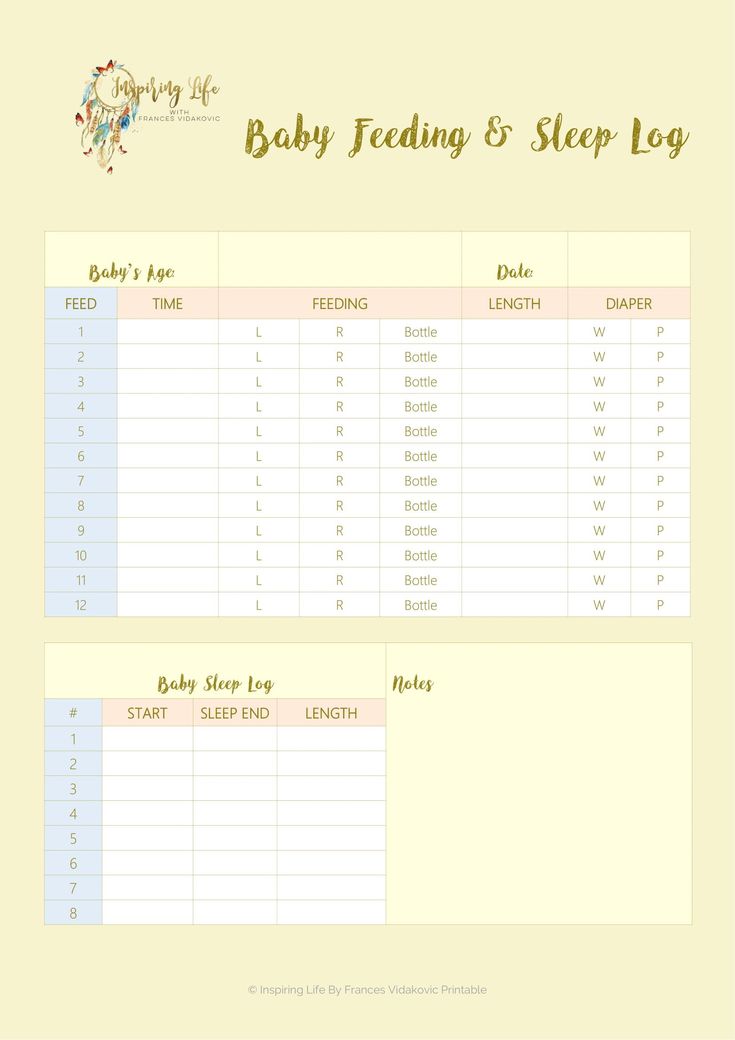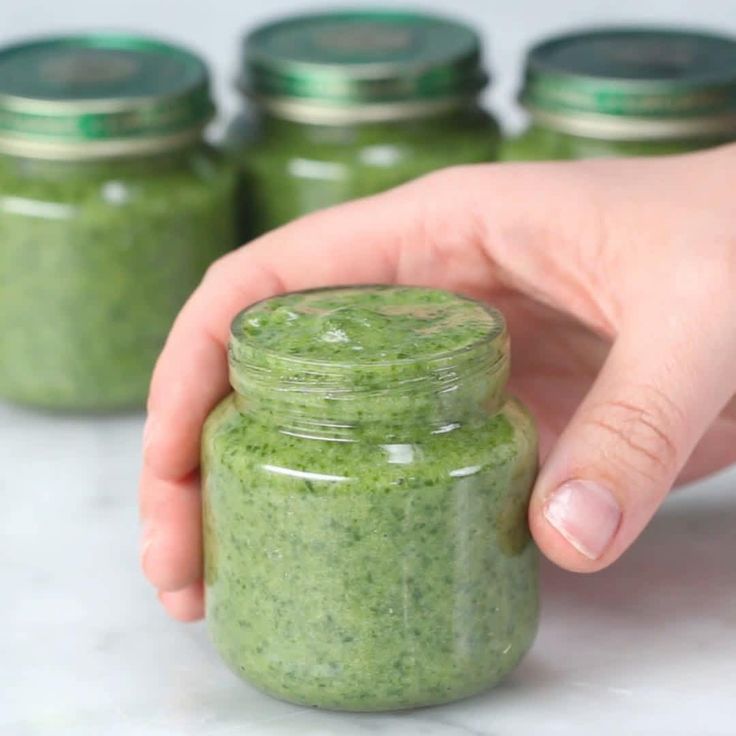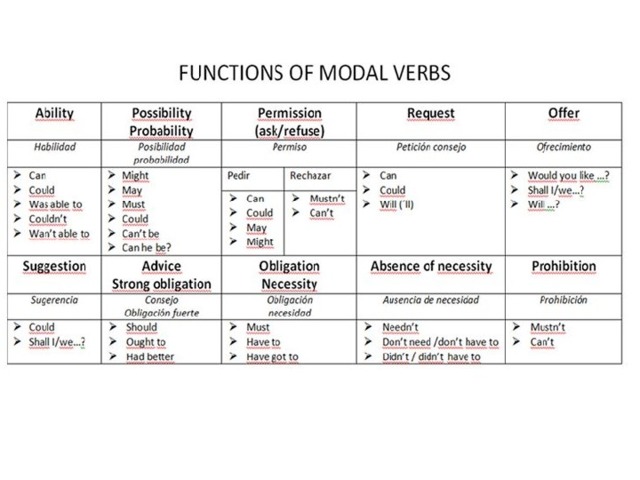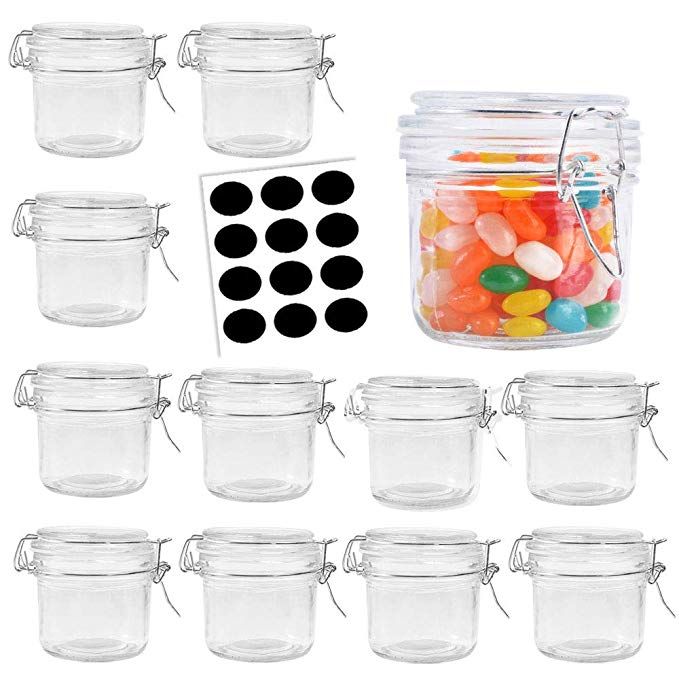Bottle feeding chart for babies
Amount and Schedule of Baby Formula Feedings
- In the first week after birth, babies should be eating no more than about 1 to 2 ounces (30 to 60 ml) per feed.
- During the first month, babies gradually eat more until they take 3 to 4 ounces (90 to 120 ml) per feed, amounting to 32 ounces per day. Formula-fed babies typically feed on a more regular schedule, such as every 3 or 4 hours. Breastfed babies usually take smaller, more frequent feedings than formula-fed infants.
If your baby sleeps longer than 4 to 5 hours during the first few weeks after birth and starts missing feedings, wake them up and offer a bottle.
By the end of the first month: Your baby will be up to at least 3 to 4 ounces (120 mL) per feeding, with a fairly predictable schedule of feedings about every 3 to 4 hours.
By 6 months: Your baby will consume 6 to 8 ounces (180–240 mL) at each of 4 or 5 feedings in 24 hours.
Formula feeding based on body weight
On average, your baby should take in about 2½ ounces (75 mL) of infant formula a day for every pound (453 g) of body weight. But they probably will regulate their intake from day to day to meet their own specific needs, so let them tell you when they've had enough. If they become fidgety or easily distracted during a feeding, they're probably finished. If they drain the bottle and continues smacking their lips, they might still be hungry.
There are high and low limits, however. If your baby consistently seems to want more or less than this, discuss it with your pediatrician. Your baby should usually drink no more than an average of about 32 ounces (960 mL) of formula in 24 hours. Some babies have higher needs for sucking and may just want to suck on a pacifier after feeding.
On-demand feeding
Initially it is best to feed your formula-fed newborn a bottle on demand, or whenever they cry with hunger. As time passes, your baby will begin to develop a fairly regular timetable of their own. As you become familiar with their signals and needs, you'll be able to schedule their feedings around their routine.
As time passes, your baby will begin to develop a fairly regular timetable of their own. As you become familiar with their signals and needs, you'll be able to schedule their feedings around their routine.
Eating & sleeping patterns
Between 2 and 4 months of age (or when the baby weighs more than 12 lb. [5.4 kg]), most formula-fed babies no longer need a middle-of-the-night feedings. They're consuming more during the day, and their sleeping patterns have become more regular (although this varies considerably from baby to baby). Their stomach capacity has increased, too, which means they may go longer between daytime feedings—occasionally up to 4 or 5 hours at a time.
If your baby still seems to feed very frequently or consume larger amounts, try distracting them with play or with a pacifier. Sometimes patterns of obesity begin during infancy, so it is important not to overfeed your baby.
Getting to know your baby's feeding needs
The most important thing to remember, whether you breastfeed or bottlefeed, is that your baby's feeding needs are unique. No book―or website―can tell you precisely how much or how often they need to be fed or exactly how you should handle them during feedings. You will discover these things for yourself as you and your baby get to know each other.
No book―or website―can tell you precisely how much or how often they need to be fed or exactly how you should handle them during feedings. You will discover these things for yourself as you and your baby get to know each other.
More information
- How Often and How Much Should Your Baby Eat?
- Making Sure Your Baby is Getting Enough Milk
- Is Your Baby Hungry or Full? Responsive Feeding Explained (Video)
- Remedies for Spitty Babies
- Last Updated
- 5/16/2022
- Source
- Adapted from Caring for Your Baby and Young Child: Birth to Age 5 7th Edition (Copyright © 2019 American Academy of Pediatrics)
The information contained on this Web site should not be used as a substitute for the medical care and advice of your pediatrician.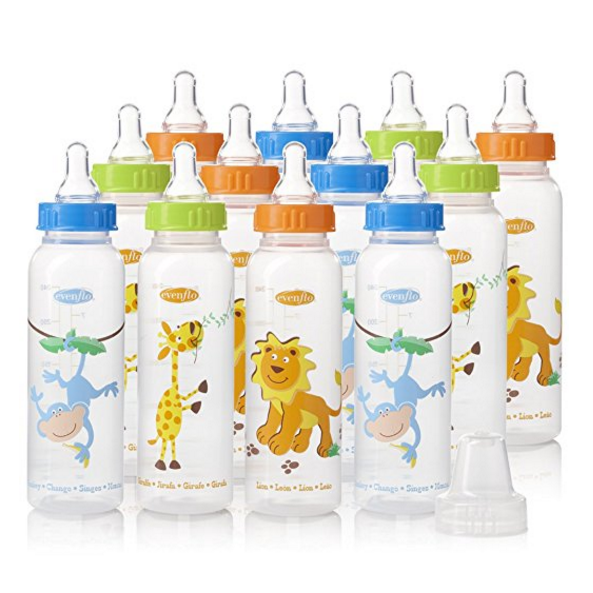 There may be variations in treatment that your pediatrician may recommend based on individual facts and circumstances.
There may be variations in treatment that your pediatrician may recommend based on individual facts and circumstances.
How Often and How Much Should Your Baby Eat?
By: Sanjeev Jain, MD, FAAP
One of the most common questions new parents have is how often their baby should eat. The best answer is surprisingly simple: in general, babies should be fed whenever they seem hungry.
How do I know when my baby is hungry?
For babies born
prematurely or with certain medical conditions, scheduled feedings advised by your pediatrician are best. But for most healthy, full-term infants, parents can look to their baby rather than the clock for hunger cues. This is called feeding on demand, or
responsive feeding.
Hunger cues
A hungry baby often will cry. But it's best to watch for hunger cues before the baby starts
crying, which is a late sign of hunger and can make it hard for them to settle down and eat.
Some other typical hunger cues in babies:
Licking lips
Sticking tongue out
Rooting (moving jaw and mouth or head in search of breast)
Putting his/her hand to mouth repeatedly
Opening her mouth
Fussiness
Sucking on everything around
It is important to realize, however, that every time your baby cries or sucks it is not necessarily because he or she is hungry. Babies suck not only for hunger, but also for comfort; it can be hard at first for parents to tell the difference. Sometimes, your baby just needs to be cuddled or changed.
General guidelines for baby feeding
It is important to remember all babies are different―some like to snack more often, and others drink more at one time and go longer between feedings. However, most babies will drink more and go longer between feedings as they get bigger and their tummies can hold more milk:
Most newborns eat every 2 to 3 hours, or 8 to 12 times every 24 hours.
 Babies might only take in half ounce per feeding for the first day or two of life, but after that will usually drink 1 to 2 ounces at each feeding. This amount increases to 2 to 3 ounces by 2 weeks of age.
Babies might only take in half ounce per feeding for the first day or two of life, but after that will usually drink 1 to 2 ounces at each feeding. This amount increases to 2 to 3 ounces by 2 weeks of age.At about 2 months of age, babies usually take 4 to 5 ounces per feeding every 3 to 4 hours.
At 4 months, babies usually take 4 to 6 ounces per feeding.
At 6 months, babies may be taking up to 8 ounces every 4 to 5 hours.
Most babies will increase the amount of formula they drink by an average of 1 ounce each month before leveling off at about 7 to 8 ounces per feeding. Solid foods should be started at about 6 months old.
Concerns about overfeeding or underfeeding your baby
Too full?
Babies are usually pretty good at eating the right amount, but they can sometimes take in more than they need. Infants who are
bottle feeding may be more likely to overfeed, because drinking from a bottle may take less effort than
breastfeeding.
Overfed babies can have stomach pains, gas, spit up or vomit and be at higher risk for obesity later in life. It's better to offer less, since you can always give more if your baby wants it. This also gives babies time to realize when they're full.
If you are concerned your baby wants to eat all the time―even when he or she is full―talk with your pediatrician. Pacifiers may be used after feeding to help sooth healthy-weight babies who like to suck for comfort, rather than nutrition. For babies who are breastfed, it's best to wait to offer pacifiers until around 3 to 4 weeks of age, when breastfeeding is well-established.
Trouble gaining weight?
Most babies will double their birth weight by 5 months of age and triple their birth weight by their first birthday. If your baby is having trouble gaining weight, don't wait too long between feeding―even if it means waking your baby. Be sure to talk with your pediatrician about how often and how much to feed your baby.
How do I know if my baby is getting enough to eat?
Daily diapers
A newborn's diaper is a good indicator of whether he or she is getting enough to eat. In the first few days after birth, a baby should have 2 to 3 wet diapers each day. After the first 4 to 5 days, a baby should have at least 5 to 6 wet diapers a day. Stool frequency is more variable and depends whether your baby is breastfed or formula fed.
Growth charts
During regular health check-ups, your pediatrician will check your baby's weight and plot it on a growth chart. Your baby's progress on the growth chart is one way to tell whether or not they are getting enough food. Babies who stay in healthy growth percentile ranges are probably getting a healthy amount of food during feedings.
Remember
Talk with your pediatrician if you have any questions or concerns about your baby getting the right amount to eat.
More information:
- Making Sure Your Baby is Getting Enough Milk
- Amount and Schedule of Formula Feedings
- Is Your Baby Hungry or Full? Responsive Feeding Explained (Video)
- Remedies for Spitty Babies
- Ask the Pediatrician: With the baby formula shortage, what should I do if I can't find any?
- Ask the Pediatrician: How should we feed our baby if we're running low on money?
-
Airplane Choo Choo: A Feeding Guide for Children (National Dairy Council)
About Dr.
 Jain:
Jain:
Sanjeev Jain, MD, FAAP, is a Clinical Associate Professor of General Pediatrics and Adolescent Medicine at the University of Wisconsin School of Medicine and Public Health. Within the American Academy of Pediatrics, he is a member of the Section on International Child Health and the Wisconsin State Chapter.
The information contained on this Web site should not be used as a substitute for the medical care and advice of your pediatrician. There may be variations in treatment that your pediatrician may recommend based on individual facts and circumstances.
How to bottle feed: tips and tricks
Kiseleva Elena Sergeevna
Candidate of Medical Sciences, Scientific Advisor MAMAKO ®
Breast milk is the best food for your baby*. But breastfeeding is not possible for all women. For moms who can't breastfeed or keep breastfeeding for as long as they would like, quality infant formula is a healthy alternative.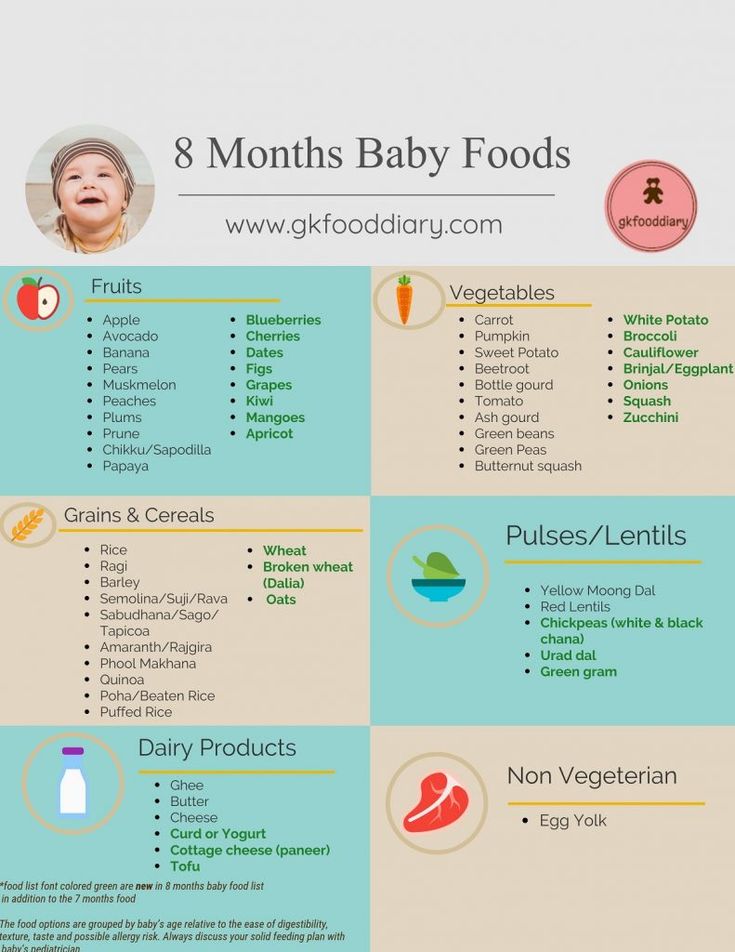
The best thing is when the baby is in her arms, ideally in skin-to-skin contact: such a position when bottle-feeding, as well as during breastfeeding, creates close contact between mother and baby, helps them get closer, strengthen emotional connection. nine0003
Feeding time is a time to be together and communicate with the baby (and for dad too).
The first days of life are the period of adaptation of crumbs to the outside world. And the first thing he is looking for is protection and comfort . In the moments of application to the skin of the baby, it warms the warmth of the mother's body, soothes and comforts her smell and heartbeat, so familiar to him even before birth. Gentle touches and calm breathing, a smile and a soft voice of a mother, a mixture warm as breast milk give the baby everything he needs - safety, warmth and nutrition. nine0003
Love and contact is the most important "ingredient" in any feeding process and infant formula is rich vitamins and nutrients that are good for your baby's health and development will help you feel confident in your ability to care for your baby.
In theory, feeding your baby formula is just a few simple steps. But if you've never made a bottle of baby food or the time is three in the morning, things seem complicated. Be patient to get into the rhythm. nine0003
For most mothers, bottle feeding becomes a part of baby food. And this does not depend on whether the bottle contains expressed breast milk or formula. The important thing is that sticking to breastfeeding exclusively can be difficult or impossible over time. Then the mother begins to supplement the baby with a mixture or transfer it to completely artificial feeding.
Below are answers to parents' questions about how to properly and safely bottle feed your baby. nine0003
1. How to make a formula bottle
We offer together step by step the process of preparing the first bottle for your baby.
- Hand hygiene : Wash hands thoroughly with soap and warm water before handling bottles and feeding the baby.
 We also check the cleanliness of the table and measuring spoon.
We also check the cleanliness of the table and measuring spoon. - Sterilization : bottles and teats should preferably be sterilized beforehand. nine0041
- Water preparation : Boil bottled baby water and cool to 40 ˚C, determine the right amount of water, then pour it into the bottle up to the desired mark - according to the number of scoops of dry formula according to the weight and age of your child.
- Determine the volume of the mixture : on the jar, in the "Feeding table" block, it is indicated how many spoons are required for one feeding. The measuring spoon should be full and without a slide - we remove the excess on a special corner of the jar. Both day and night, it is best to look at the feeding chart (unless otherwise determined by your doctor) so as not to accidentally add too much or too little formula. An overly dilute formula or an excess of it can interfere with a child's proper nutrition. nine0041
- Mixing according to instructions : pour the required amount of product without a slide into a bottle of prepared water.
 Next, close the bottle with a lid and roll between the palms. If the bottle is shaken, a lot of foam may form.
Next, close the bottle with a lid and roll between the palms. If the bottle is shaken, a lot of foam may form. - Checking the temperature of prepared meals : put a drop of the mixture on the inside of the wrist, where the skin is as sensitive as in a baby's mouth. Immediately after preparing the mixture, tightly close the jar of baby food and feed the baby. nine0041
- Let daddy give a bottle of and be alone with the baby - they also need communication and time to make friends. The reality is that many dads feel left out while breastfeeding, but this can be avoided with formula feeding. Show how to hold baby and bottle, support your partner during the first feedings . This help will be useful for you too. An extra pair of hands when bottle feeding gives mom a little more precious time. nine0041
2. What water to use for infant formula
Only boiled bottled baby water should be used in the bottle. This is a great way to make sure the water you use is safe for your baby.
All children's water is registered by Rospotrebnadzor in accordance with SanPiN 2.1.4.1116-02. Such water corresponds to the indicators of the highest category, is balanced in terms of mineral composition and is characterized by low total mineralization in the range of 200-500 mg / l (a baby’s body is simply not able to absorb higher concentrations of minerals and salts). nine0003
Packaged water may look the same. But some manufacturers divide baby water into two categories - for drinking and for preparing mixtures. The composition of drinking water contains a higher concentration of minerals that are beneficial for the child's body, but they can upset the balance of the nutrient mixture. Therefore, on the labels you can read about the different purposes of water: suitable for preparing baby food or for feeding babies and young children.
It makes no sense to make large stocks of baby water - water in open bottles becomes unusable after 24-48 hours, depending on the manufacturer. Tap or spring water is also not suitable for feeding babies. Such water may contain various impurities, bacteria and microbes that are dangerous for babies. Boiling will “free” water from harmful microorganisms, but not from impurities of heavy metals and chemicals. nine0003
Tap or spring water is also not suitable for feeding babies. Such water may contain various impurities, bacteria and microbes that are dangerous for babies. Boiling will “free” water from harmful microorganisms, but not from impurities of heavy metals and chemicals. nine0003
3. How to use the measuring spoon correctly
The measuring spoon helps you accurately measure the amount of the mixture and get the correct dosage. Fill a full spoon, but shoot a slide. You don't need a kitchen knife for this - each jar of mixture has a convenient wide corner for removing excess. And in economical jars with a volume of 800 g, for example, in MAMAKO ® Premium with goat milk, the spoon is conveniently attached to the lid - so you don’t have to look for it in a large package before each feeding. Fingers and knives are not absolutely clean, they always have a lot of bacteria that can spoil the mixture and harm the health of the baby. The antibacterial fastening of the spoon and the corner of the jar protect the mixture and the child from harmful bacteria from the external environment. nine0003
nine0003
4. What temperature should the water and ready mix be?
Boiled water should be cooled to 40 °C. This temperature will retain all the benefits of baby food based on goat's milk. The easiest way to get water at the right temperature is to boil it in a kettle and let it cool for 20-30 minutes. A kettle for boiling water requires special care - it is covered with a mineral coating, which is easily removed by boiling citric acid. This is a troublesome procedure, since after cleaning it takes about 3-4 boils to remove traces of detergent. Create a rhythm for preparing dishes - at night or with a crying baby in your arms, there will be no time for this. The finished formula should be warm: 37 ˚C, as this is the temperature of breast milk and it is optimal for the baby's food. Before feeding, do not forget to check if the mixture is too hot by applying a couple of drops on the wrist. If it burns, you can hold the bottle under cold water for a while, after closing the nipple with a lid. If the mixture has cooled slightly, it is enough to heat it under a warm stream of water. nine0003
If the mixture has cooled slightly, it is enough to heat it under a warm stream of water. nine0003
5. Mixed feeding: breast or bottle first
The best feeding schedule is when a mother supplements her baby with formula after breast milk. If the baby is given a bottle first, then he may begin to refuse the breast. This is due to the fact that it is easier to suck through the nipple, and with natural feeding, the baby has to “work” a lot to get mom's milk.
6. How many baby bottles do you need per day
It all depends on how old you are on formula, how much formula you give and how often your baby eats. It's best to keep six to ten bottles on hand so you always have clean dishes. In addition, the more bottles, the less often they will have to be sterilized. Buy 125 ml bottles for an infant, then upgrade to 150 ml and 240 ml as your baby's appetite and needs increase. Don't rush to part with smaller bottles, they are great for supplementing and watering. nine0003
nine0003
7. Why can't the bottle be held horizontally during feeding? The angle of inclination increases as the bottle empties, so it is important to be close to the baby, not leaving him alone during feeding even for a minute. If you do not tilt the bottle, the child will begin to swallow air. Air bubbles can cause regurgitation during or immediately after feeding. In addition, when air enters the baby’s stomach, he feels full faster, which means he eats less and will be hungry after a short period of time. nine0003
8. Which nipple to choose for your baby bottle
Many wide and narrow neck bottles already come with a set of baby nipples. Almost all of them are made of silicone. Which shape of the nipple - anatomical or round - and what size of hole your child will like, can be understood by his reaction during feeding. If the mixture drips from the corners of the mouth, the flow may be too fast due to the large opening. If the baby is sucking hard, the mixture may drip too slowly.![]() We recommend that you do not enlarge the opening of the nipple: it may tear, and the microparticles of the product may enter the child's body. Perhaps the hole is just clogged, this sometimes happens. If necessary, nipples can be replaced and bought separately from the bottles. nine0003
We recommend that you do not enlarge the opening of the nipple: it may tear, and the microparticles of the product may enter the child's body. Perhaps the hole is just clogged, this sometimes happens. If necessary, nipples can be replaced and bought separately from the bottles. nine0003
9. Should baby bottles be sterilized
Yes, to limit the spread of bacteria. Hard-to-reach places of the bottle must be washed from the mixture (a brush and warm water are enough) before sterilization. A sterilizer is ideal for this purpose - ultrasonic, electric or steam for a microwave oven. It can sterilize all baby accessories - bottles, nipples, caps, brushes. Of course, you can replace the sterilizer with a simple boil, but be careful that the water does not boil away, otherwise the bottles and nipples will be damaged and become dangerous. nine0003
10. Can I use the microwave to heat formula
Resist the temptation to microwave the formula and save time. Microwave ovens heat liquids unevenly. Even if the bottle is not hot, the mixture can warm up quite strongly: there is a risk of burning the baby. In addition, heating in the microwave can break down the nutrients in the formula.
Even if the bottle is not hot, the mixture can warm up quite strongly: there is a risk of burning the baby. In addition, heating in the microwave can break down the nutrients in the formula.
11. Can leftover formula be stored
If your child has not finished formula, discard any leftover formula. No need to heat up and reuse it. It's not safe for the baby. After a while, bacteria begin to multiply in the finished mixture. Dilute a fresh batch of formula every time the baby is hungry.
12. How to prepare a bottle while traveling
If you are away from home or on the road for several hours, you can take two bottles of warm boiled water in a thermal bag that keeps you warm. Before each feeding, it remains to pour the right amount of mixture into the bottle (it is convenient to measure portions in advance according to the number of feedings in the infant formula dispenser). If the water in the bottle is cold, it is enough to warm it under warm water (this will take a little time). Bottles and teats should last until the next opportunity to wash and sterilize them. Remember that a thermal bag is good for maintaining the temperature of boiled water, but it cannot be used to store the finished mixture - this is harmful to the baby's health. nine0003
Bottles and teats should last until the next opportunity to wash and sterilize them. Remember that a thermal bag is good for maintaining the temperature of boiled water, but it cannot be used to store the finished mixture - this is harmful to the baby's health. nine0003
MAMAKO ® fully supports breastfeeding, but since this is not always possible, we have shown you how to bottle feed with love. In addition, the preparation of baby food will become a conscious and important matter. Very little time will pass, and you will fondly remember these precious moments of tender age, and feeding time will be the beginning of a warm, close connection with the baby.
* Breast milk is the best food for babies. WHO recommends exclusive breastfeeding for the first 6 months of a child's life and continued breastfeeding after complementary foods are introduced until the age of 2 years. Before introducing new products into the baby's diet, you should consult with a specialist. The material is for informational purposes and cannot replace the advice of a healthcare professional. For feeding children from birth. The product is certified. nine0010
The material is for informational purposes and cannot replace the advice of a healthcare professional. For feeding children from birth. The product is certified. nine0010
#Advice for Mom
See also
Infant feeding patterns - what to choose
#Tips for Mom #breastfeeding
Kizino Polina Alexandrovna
pediatrician, perinatal psychologist
nine0002 Pacifier - benefits and harms#Advice for Mom
Shchelkunova Valeriya Maksimovna
neonatologist-resuscitator, specialist in children's medical massage, blogger, founder of the online school for moms Hellobaby_school
How to improve the digestion of a newborn
#Tips for Mom #colic #baby formulas #newborns
Shcherbakova Alla Anatolyevna
Candidate of Medical Sciences, pediatrician, gastroenterologist
See all
View all
Infant feeding patterns - what to choose
# Tips for mom # breast-feeding #grudnoe-vskarmlivanie
Kizino Polina Alexandrovna
pediatrician, perinatal psychologist
How to improve the digestion of a newborn
# Tips for mom # colic #koliki # newborn formulas # newborns
Shcherbakova Alla Anatolyevna
Candidate of Medical Sciences, pediatrician, gastroenterologist
See all
View all nine0003
See all
Soother - benefits and harms
# Tips for mom
Shchelkunova Valeriya Maksimovna
neonatologist-resuscitator, specialist in children's medical massage, blogger, founder of the online school for moms Hellobaby_school
See all
newborn feeding regimen on IV, how to properly feed a baby with a formula from a bottle
The desire for a child to grow strong and healthy is natural for mothers. And the health of a newborn begins with proper nutrition. Mother's milk has always been considered the best option for feeding - the most healthy and nutritious food for infants. However, in some cases, breastfeeding is not possible. And then mixtures come to the aid of mothers.
And the health of a newborn begins with proper nutrition. Mother's milk has always been considered the best option for feeding - the most healthy and nutritious food for infants. However, in some cases, breastfeeding is not possible. And then mixtures come to the aid of mothers.
Contents: Hide
- When is it necessary to switch to artificial feeding
- How to choose a formula
- Basic rules for artificial feeding
- Diet
- Major mistakes in artificial feeding
In what cases is it necessary to switch to artificial feeding
Medical contraindications to breastfeeding. There are a number of diseases in which breast milk is prohibited. On the mother's side, these are HIV, an open form of tuberculosis, dangerous infections, and a serious state of health. On the part of the child, these are leucinosis, galactosemia, and individual food intolerance. It is not necessary to take tests after hearing the terrible names of diseases.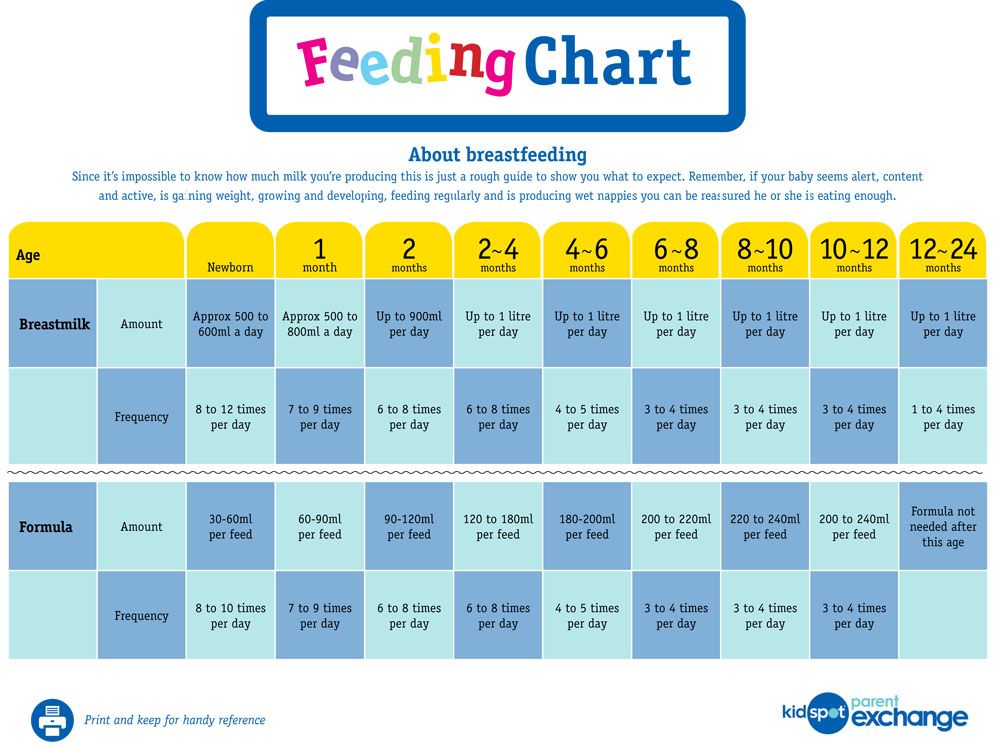 All newborns are checked in maternity hospitals for their presence. But allergies are not so easy to identify. Many newborns have skin rashes and redness, which may be due to a reaction to an aggressive environment. Only a strict diet for the mother can help here, so that her milk does not contain allergens, monitoring the baby and consulting a doctor. nine0003
All newborns are checked in maternity hospitals for their presence. But allergies are not so easy to identify. Many newborns have skin rashes and redness, which may be due to a reaction to an aggressive environment. Only a strict diet for the mother can help here, so that her milk does not contain allergens, monitoring the baby and consulting a doctor. nine0003
Lack of lactation or its complete cessation. This is the second objective reason for transferring a child from breast milk to formula. Lactation does not always come in the right amount and it can be increased. It happens that milk disappears a few days after the birth of the crumbs. This often depends on the individual characteristics of the mother's body. So that the child does not starve, he is first transferred to mixed, and then completely to artificial feeding.
Insufficient nutritional value of mother's milk. Usually this problem can be solved without resorting to the transition to IoT, but this is not always possible. A woman may have a lot of milk, but it will be like water in both color and consistency. In such cases, doctors give advice to the mother on nutrition in order to increase the fat content of milk and its usefulness. If the milk remains watery, the child stops eating, cries of hunger, loses weight. The only way out in this situation is the transition to the mixture. nine0003
A woman may have a lot of milk, but it will be like water in both color and consistency. In such cases, doctors give advice to the mother on nutrition in order to increase the fat content of milk and its usefulness. If the milk remains watery, the child stops eating, cries of hunger, loses weight. The only way out in this situation is the transition to the mixture. nine0003
Impossibility of regular feeding. Children who, for a number of reasons, are separated from their mother for long periods of time are transferred to artificial feeding: the woman is in a hospital, going to work or study, business trips, etc. If the break in breastfeeding is one-time, then restoring lactation and breastfeeding is still possible . However, more often in such cases, breastfeeding has to be abandoned.
Mother's personal wish. Unfortunately, there are cases when a woman, having every opportunity to breastfeed her baby, refuses to breastfeed for various subjective reasons. In this case, lactation is interrupted, and the baby is transferred to the mixture. nine0003
nine0003
Read also: Newborn weight gain by month
How to choose a formula
If you are going to transfer your baby to artificial feeding, then the first thing you will encounter will be the choice of nutrition. Today there are a large number of different mixtures: adapted and non-adapted, dairy and sour-milk, dry and liquid. There are mixtures against regurgitation, hypoallergenic, for premature babies, etc. How to choose the optimal replacement for mother's milk from such a variety? nine0003
- Make your choice only after consulting a pediatrician. The doctor will examine the baby and give all the necessary recommendations.
- Monitor your child. When adapting to a new diet, the child may have small rashes, but they disappear if the body begins to absorb the mixture normally. The baby eats with appetite, he has a normal stool and no colic. Otherwise, the mixture must be changed.
- If there is a need to replace the mixture with a thicker one (anti-spitting), choose the same brand of food that was previously used.
 nine0041
nine0041 - Consider the age of the baby. All mixtures have a gradation by months of life.
- Prefer adapted formulas, they are usually easier to digest
Basic Rules for Artificial Feeding save you a lot of problems.
1. Choose proven blends. This applies not only to the choice of brand, but also to the packaging itself. Look at its integrity, check the expiration date. nine0003
2. Observe the storage conditions for opened packaging at home (in a dry and cool place, but in no case in the refrigerator, the mixture must not become damp). Remember that the open mixture is stored for three weeks. After this period, it can no longer be used.
3. Strictly follow the instructions when preparing meals. It is indicated on the packaging. Water for the preparation of the mixture must be purified and boiled. The optimal temperature for preparing the mixture is 36–37 °C. You can cook food right in the bottle. This is quite convenient, since baby bottles have a volume scale that makes it easier to calculate the right amount of scoops. The mixture must be stirred until completely dissolved, and then cooled to an acceptable temperature so that the baby can drink without burning himself. You can check if the milk is hot by dropping it on your wrist - there the skin is most tender and sensitive. If the temperature is almost not felt, then the mixture can be given to the child. nine0003
The mixture must be stirred until completely dissolved, and then cooled to an acceptable temperature so that the baby can drink without burning himself. You can check if the milk is hot by dropping it on your wrist - there the skin is most tender and sensitive. If the temperature is almost not felt, then the mixture can be given to the child. nine0003
4. Sterilize baby dishes. Baby bottles and nipples should be thoroughly rinsed using a special brush so that no food residue remains. You can use children's dishwashing detergents. Do not wash bottles with common cleaning products that you are used to using, no matter how good they are. After washing, be sure to place the dishes in boiling water. This helps to kill harmful bacteria. It is recommended to sterilize children's dishes during the entire first year of a baby's life. Then you can limit yourself to just a thorough wash. nine0003
5. Hold the bottle in a semi-vertical position when feeding. The milk should completely fill the nipple. This prevents the child from swallowing air. After feeding, it is necessary to hold the baby in a column for several minutes to avoid spitting up.
This prevents the child from swallowing air. After feeding, it is necessary to hold the baby in a column for several minutes to avoid spitting up.
6. Monitor the amount of formula consumed and the feeding schedule. Maintaining a balance is extremely important for the healthy and full development of the baby. nine0003
- Calculate the amount of formula to be prepared based on the baby's weight. It is body weight, and not the age of the crumbs, that is the main indicator when calculating the daily nutritional intake. You can find out the required volume of the mixture for feeding either at a pediatrician’s appointment, or on your own (it is recommended to use Maslov’s caloric method when calculating).
- Observe the breaks between feedings. During the day they should be 3.5 hours, at night - 6. Try not to break the schedule.
- Give your child water. Supplementation with water is a necessity for artificial feeding. Water should be given somewhere in the middle of the interval between feedings or 10-15 minutes after it.
 Avoid supplementation before meals. nine0041
Avoid supplementation before meals. nine0041
Major mistakes in artificial feeding
Overfeeding. The desire to feed the child is understandable, but in the case of mixtures, feeding must be approached strictly. On artificial feeding, the child is normally gaining weight very well. Excess body weight is an additional burden on the body and health problems. Even an adult can find it difficult to cope with problems from being overweight. What to say about the tiny weak body of a newborn? Follow the diet and control the daily milk intake. Fortunately, you can always see how much the child ate. nine0003
Unreasonable mixture change. If the child eats the current mixture well, then it is not necessary to change it. The baby will have to go through a difficult period of adaptation again, and it’s not a fact that his body will accept new food just as well.
Use of old mix. The child's food must be fresh. If the child has not finished eating, then literally after half an hour the milk can only be poured out.